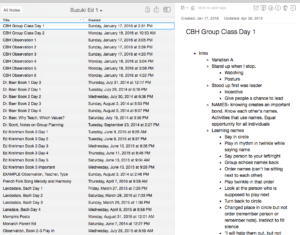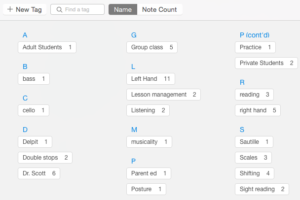
You reached out to teachers on Day 1 requesting an observation. What did they say? If they are anything like the teachers in the Austin area, you probably had no trouble setting up a few observations.
By setting up observations with local teachers you set yourself up for success in three ways.
1. Research. You are doing field work here. Discover what is successful and what isn’t. Ask how the teacher organizes him or herself. What tone of voice are they using? How is the studio set up?
2. Environment. Your teacher tells you to listen to (several) recordings AND do research on relevant music history in order to immerse yourself in the world of a new piece. Observing quality teaching is the first step in inserting your mind into a robust, vibrant environment of music education.
3. Network. Meet the teachers in your area and automatically improve your reputation with them by demonstrating your desire to learn through observation.
Once you set up observations make sure to get the most out of your time by following these simple procedures.
— Know what you are getting yourself into.
The worst possible scenario is showing up late to a lesson that is already occurring. Ask the teacher in advance specific instructions for entry (parking, gate cods, knock vs. walk in). Know who you will be observing (age, developmental level, school, any potential learning challenges).
— Have an organized way to store your notes.
I know many still put pen to paper, but I have moved to electronic note taking purely for the ease of storage and organization. A notebook in Evernote is set aside just for observations.


I label each note with descriptive information that will remind me of the original observation and tag it for easy search ability.
Half of the power of observation is in immersion and networking, but having searchable notes and documenting what you do will inevitably come in handy.
